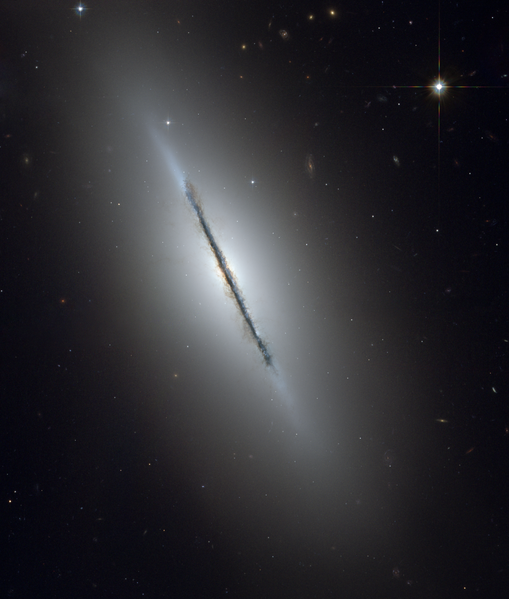Fayl:Ngc5866 hst big.png

Sınaq göstərişi ölçüsü: 509 × 599 piksel. Digər ölçülər: 204 × 240 piksel | 408 × 480 piksel | 652 × 768 piksel | 870 × 1.024 piksel | 1.739 × 2.048 piksel | 3.190 × 3.756 piksel.
Faylın orijinalı (3.190 × 3.756 piksel, fayl həcmi: 25,78 MB, MIME növü: image/png)
Faylın tarixçəsi
Faylın əvvəlki versiyasını görmək üçün gün/tarix bölməsindəki tarixlərə klikləyin.
| Tarix/Vaxt | Kiçik şəkil | Ölçülər | İstifadəçi | Şərh | |
|---|---|---|---|---|---|
| indiki | 18:38, 16 fevral 2009 |  | 3.190 × 3.756 (25,78 MB) | Spencer | {{Information |Description={{en|1=From original NASA press release: :This is a unique view of the disk galaxy en:NGC 5866 tilted nearly edge-on to our line-of-sight. Hubble's sharp vision reveals a crisp dust lane dividing |
Fayl keçidləri
Aşağıdakı səhifə bu faylı istifadə edir:
Faylın qlobal istifadəsi
Bu fayl aşağıdakı vikilərdə istifadə olunur:
- ab.wikipedia.org layihəsində istifadəsi
- ace.wikipedia.org layihəsində istifadəsi
- af.wikipedia.org layihəsində istifadəsi
- af.wikibooks.org layihəsində istifadəsi
- af.wikiquote.org layihəsində istifadəsi
- af.wiktionary.org layihəsində istifadəsi
- ak.wikipedia.org layihəsində istifadəsi
- als.wikipedia.org layihəsində istifadəsi
- am.wikipedia.org layihəsində istifadəsi
- am.wiktionary.org layihəsində istifadəsi
- ang.wikipedia.org layihəsində istifadəsi
- ang.wiktionary.org layihəsində istifadəsi
- an.wikipedia.org layihəsində istifadəsi
- an.wiktionary.org layihəsində istifadəsi
- arc.wikipedia.org layihəsində istifadəsi
- ar.wikipedia.org layihəsində istifadəsi
- ar.wikibooks.org layihəsində istifadəsi
- ar.wikinews.org layihəsində istifadəsi
- ar.wikiquote.org layihəsində istifadəsi
- ar.wikisource.org layihəsində istifadəsi
- ar.wikiversity.org layihəsində istifadəsi
- ar.wiktionary.org layihəsində istifadəsi
- arz.wikipedia.org layihəsində istifadəsi
- ast.wikipedia.org layihəsində istifadəsi
- ast.wiktionary.org layihəsində istifadəsi
- as.wikipedia.org layihəsində istifadəsi
- av.wikipedia.org layihəsində istifadəsi
- ay.wikipedia.org layihəsində istifadəsi
- ay.wiktionary.org layihəsində istifadəsi
- az.wikipedia.org layihəsində istifadəsi
- az.wikiquote.org layihəsində istifadəsi
- az.wikisource.org layihəsində istifadəsi
- az.wiktionary.org layihəsində istifadəsi
- bat-smg.wikipedia.org layihəsində istifadəsi
- ba.wikipedia.org layihəsində istifadəsi
- bcl.wikipedia.org layihəsində istifadəsi
- be-tarask.wikipedia.org layihəsində istifadəsi
- beta.wikiversity.org layihəsində istifadəsi
- be.wikipedia.org layihəsində istifadəsi
- be.wikibooks.org layihəsində istifadəsi
- be.wikiquote.org layihəsində istifadəsi
Bu faylın qlobal istifadəsinə baxın.

